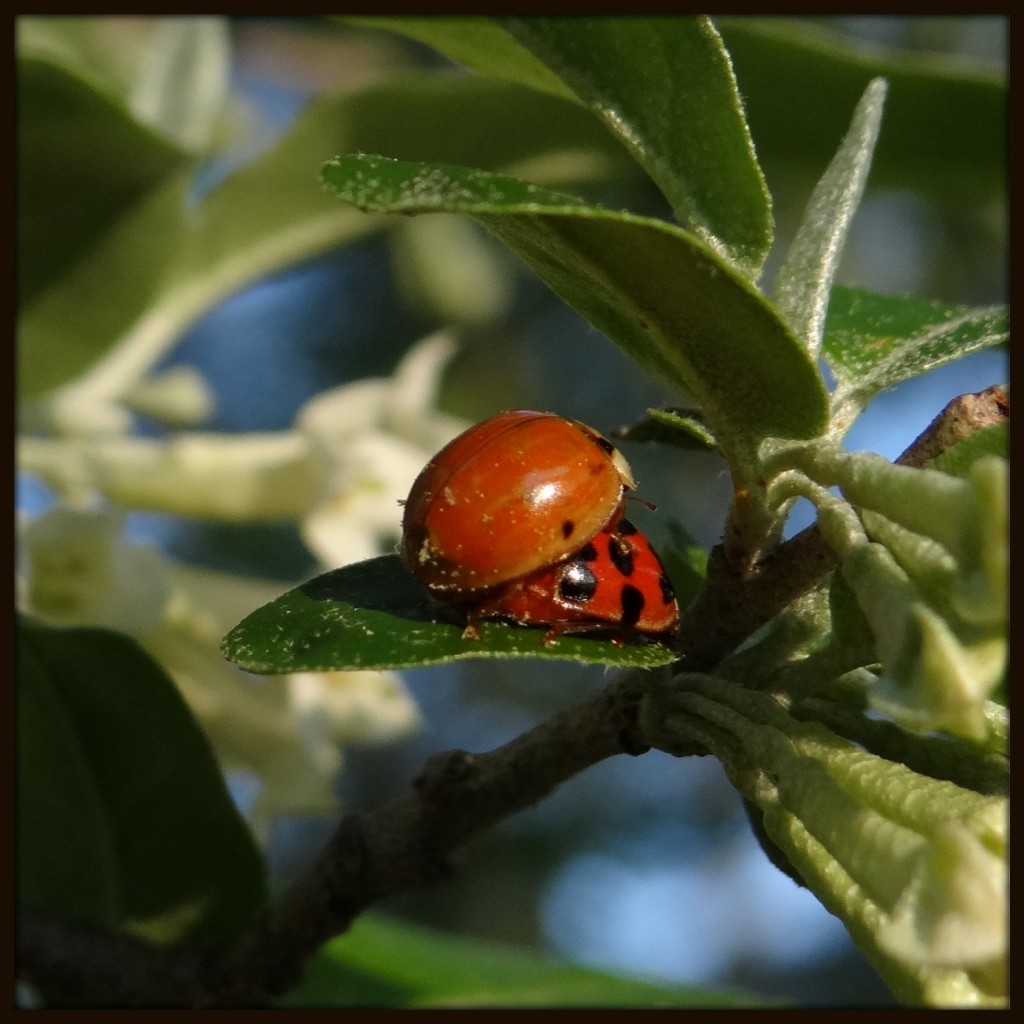New growth on a greenbrier along Piney Woods Church Road glows in Easter light.
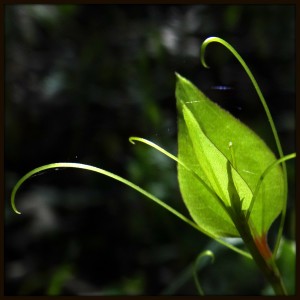
New growth on a greenbrier along Piney Woods Church Road glows in Easter light.

At last, after numerous attempts and almost as an afterthought, I managed to capture a privet blossom today along Piney Woods Church Road. The flowers are simple yet almost elegant. Like wisteria, I think they are more attractive solitary than in the clusters where they are typically found (in the case of privet, perhaps four or five blooms all crammed together on a stem). Perhaps that is because both plants are so highly invasive. All the privet flowers (happily visited by buzzing bumblebees on sunny days) will become privet seeds, and privet’s conquest of the Georgia Piedmont will continue.
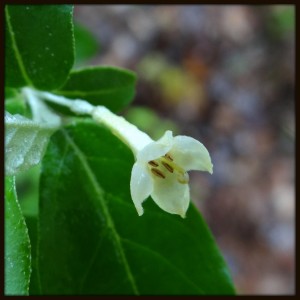
A moderate breeze was blowing through the tulip poplar saplings on the morning after a long rainfall. I took this picture while the leaves swayed in the wind, water droplets clinging to their stems and upper surfaces. As proof that yesterday’s rain was quite intense, I include the bottom photograph: evidence that it did, in fact, rain dogwoods and catkins.
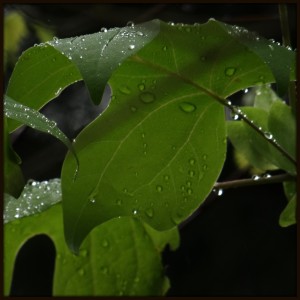
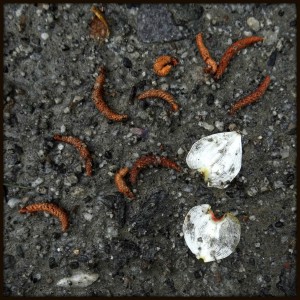
I was drawn to take this photograph by the line of tiny water droplets, like miniature glass marbles, cradled atop a blade of grass. While taking the photograph, I noticed that there also seemed to be water droplets along the underside of the grass blade. At home, viewing the image in Picassa, I was surprised to see these globes of water hanging so delicately, like suspended worlds. I included two near-identical pictures below because the second one includes an image of the photographer (the first one includes part of the photographer’s hand, but not his distinctive hat). Can you spot this unintended “selfie”?
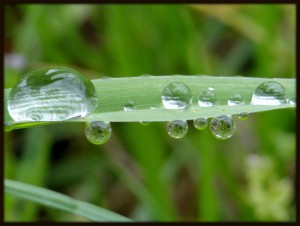
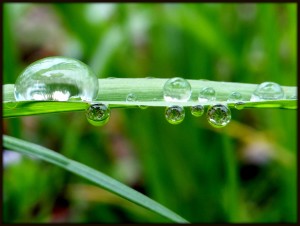
A long day and night of rain had finally ended, and in the cloud-light of late morning, the Piney Woods Church Road landscape felt saturated with rich colors — mostly shades of green, but occasional patches of bluish-purple where the wisteria blossoms hung. On my way back down the road — typically a time in which I take few photos, relishing the things I had already encountered — I was drawn to this lone wisteria blossom. Most of the wisteria flowers bloom in long, dense clusters; this one was a single bloom, by itself. I felt compelled to photograph it, even though I had already dismissed wisteria as “adequately photographed”. The result is somehow entrancing, like a suspended dance of color and form….
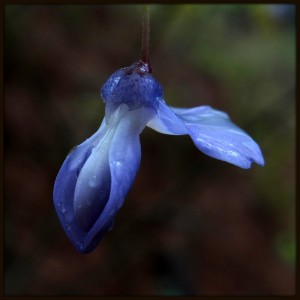
It was raining much harder than I expected, and hoped, when I left my house for Piney Woods Church Road. My Sony CyberShot camera is equipped with a microphone on its upper surface, conveniently located for catching rainwater. I tried a few photographs of raindrops on leaves; as long as I kept the camera lens pointed horizontally or even downward, I managed to avoid having to wipe the lens after each photograph. Fortunately, I had brought along a gallon Ziploc™ freezer bag to hold the camera in-between shots. Soon, the inevitable happened. I decided to see what the world would look like through a Ziploc™ lens. The resulting images are dreamy, verging on watercolor, and sometimes even haunting. Here are a few photos from the day’s experiment.
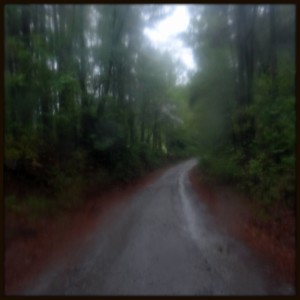
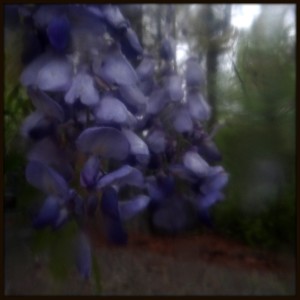


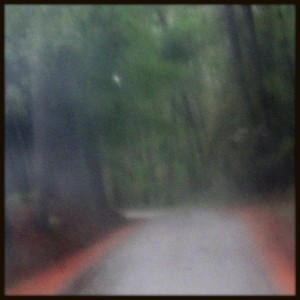
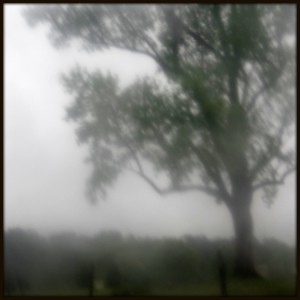


What a cold, rainy day it was — more suggestive of March in Georgia than the second half of April. During most of my walk, I kept my camera ensconced in a plastic Ziploc™ bag, which led to some intriguing, dreamy images that I will post separately. On my way back home, I stopped at a drainage ditch to catch this photograph of grasses and raindrop circles.
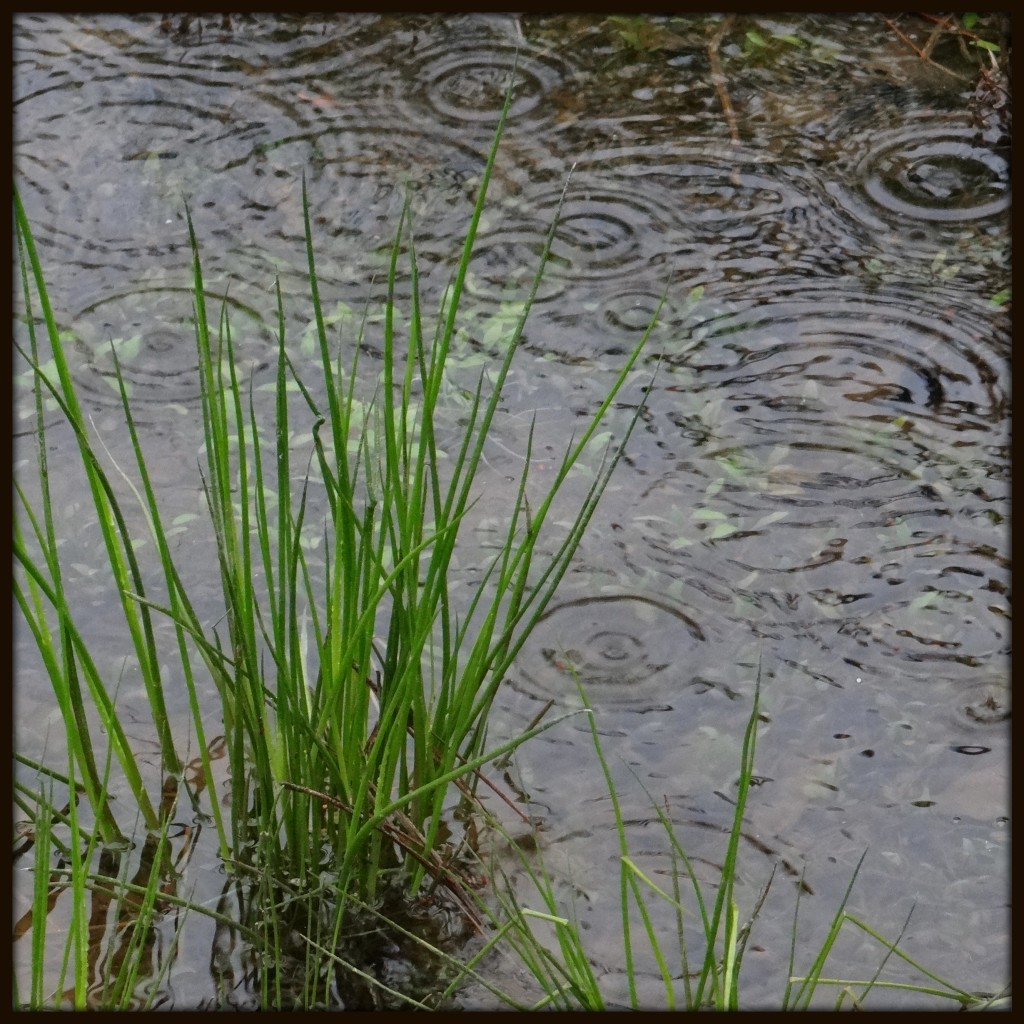
On my Piney Woods Church Road saunter this morning, I encountered two new “common weed” wildflowers in bloom: the low hop clover (Trifolium campestre) and field madder (Sherardia arvensis). The low hop clover is a yellow flower native to Eurasia now common in most of North America; introduced by farmers to improve the soil and feed their livestock, low hop clover is also a wild edible plant. Field madder, also from Eurasia, commonly grows in farm fields and along road edges throughout the Eastern United States. It has minute flowers that are less than an eighth of an inch across. I only noticed it because I was sitting on the ground in one spot for several minutes, during yet another attempt to photograph a lobelia growing alongside a barbed wire fence.
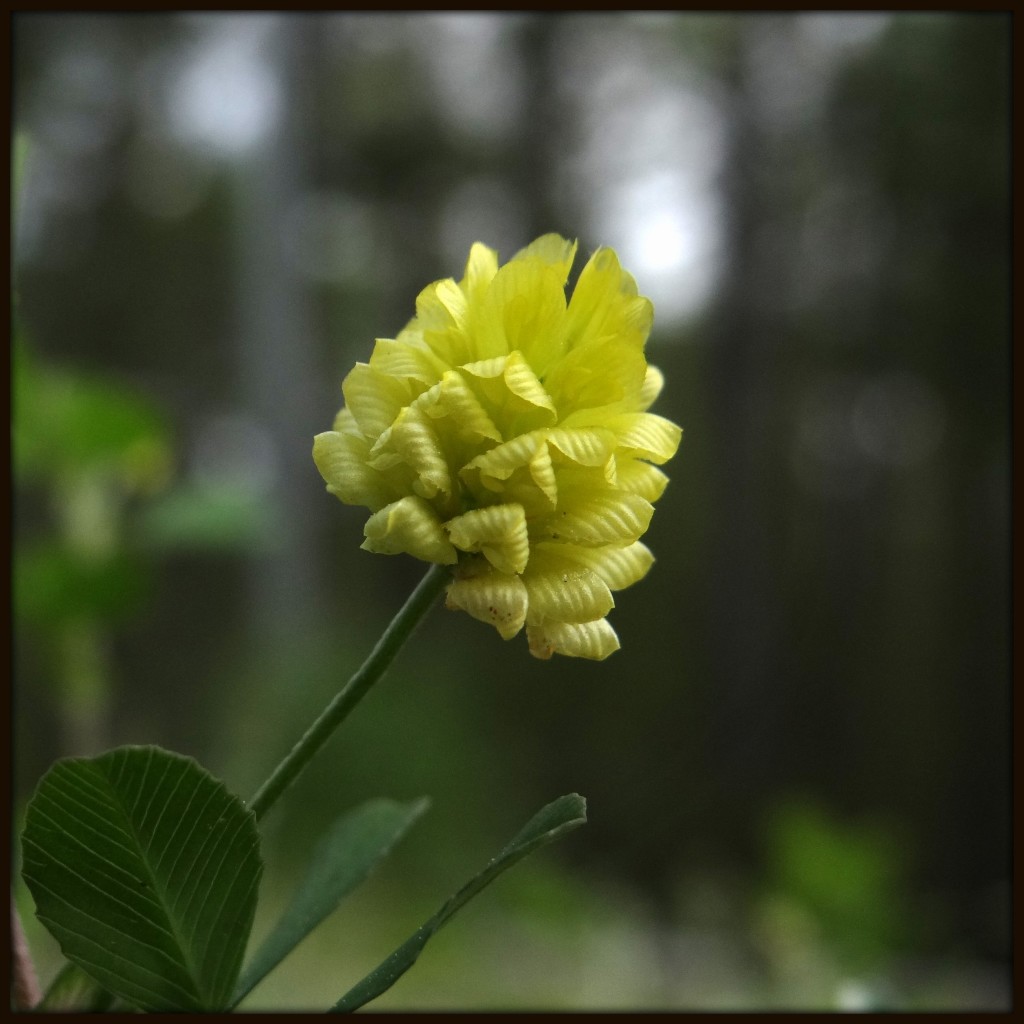

Today’s featured photograph is another image in a category that has become a series now, roadbed still lifes. I turned the corner from Rico Road onto Piney Woods Church Road, and was immediately captivated by this fallen sweetgum leaf, in a found composition with a catkin (probably oak). The title of this image refers to the star-shaped leaves of the sweetgum tree (Liquidambar styraciflua).
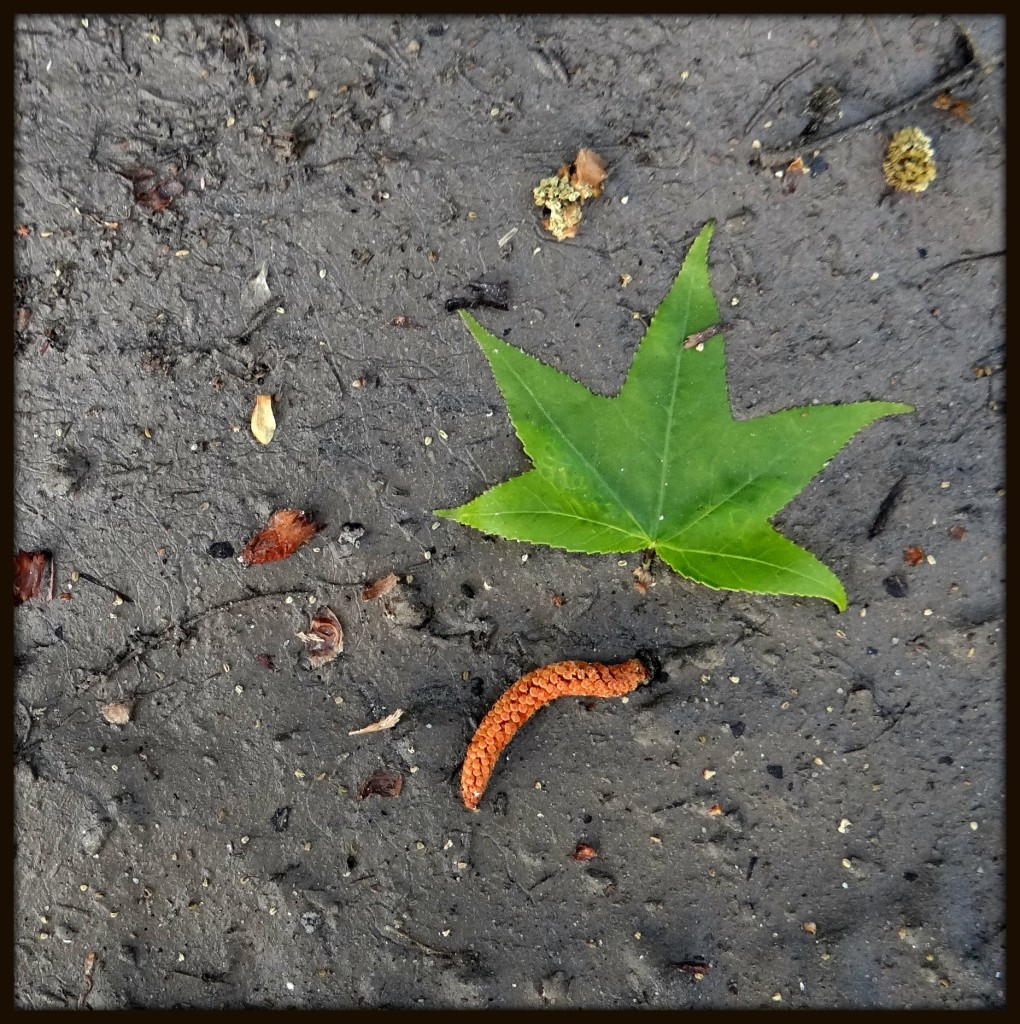
While struggling (and largely failing) to take an interesting photograph of Chinese privet flowers, I caught this pair of ladybugs mating on a leaf. It’s springtime, and love is in the air. My wife suggested that this could make a great Valentine’s Day card, but I am not as certain.
